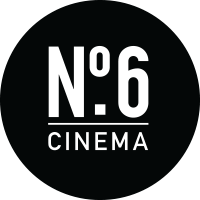
I am a filmmaker living on the Isle of Wight for many years and I’m delighted to have my film KEKEE MANZIL - House of Art, being screened at the No 6 Cinema across the water in Portsmouth in September. It’s been shown all over the world - firstly in Bombay the city I was born and grew up in, and just as it was completed the pandemic happened! It was first screened in the UK at the South Asian Festival in London and won Best Documentary and Music Score, as it did later in Madrid and Chicago, but there is something special when shown on your home turf.
I began making the film in 2002 - recording my father and mother Kekoo and Khorshed Gandhy as they were witness to key moments of the Indian contemporary art movement from the early forties, establishing the first contemporary art gallery in Bombay. The story was a curious one - how my father, a casualty of the second world war, as far as his incomplete studies at Cambridge were concerned, landed up being one of the catalysts of an art movement, which was totally at odds with his family’s Parsee business background. It all revolved around a shop selling picture frames and a series of curious co-incidences which led him to the point of opening Gallery Chemould in 1963. I also began to record the artists who were his contemporaries on that journey and managed to record a few artists from that early period like Raza, Tyeb Mehta and Krishen Khanna.
I had a lot of material as well as footage of the recording my parents in their final years when they were confined to their home in Bandra, called Kekee Manzil.
After they both passed away in 2012-13 I knew I had the material to make a documentary which could reflect on the story of Indian art from a very personal point of view. I started collaborating with Dilesh Korya who edited and co-directed the film which I financed. We did some further interviews with living artists like Nalini Malani, Atul Dodiya and Anish Kapoor, who knew my father and could reflect on the legacy.
The story is told through interviews with family members, as well as old family archives from 8 mm film and it gives an account of how the road led to contemporary art - through encounters with Italian prisoners of war, Jewish emigres who escaped Nazi Germany, Belgian businessmen who wanted to invest in picture frame moulding. What became apparent was that historical events played a huge role as this story is told through the decades. It is a very ambitious attempt to tell the story of art as well through a very key player - the city of Bombay/Mumbai as it impacts on the work of the artists as political events unfold. The film also relates the story of the artist MF Husain - the most important artist of post independent India and why he lands up in exile in Qatar and is buried far away from his homeland in London in 2011.
Behroze Gandhy



